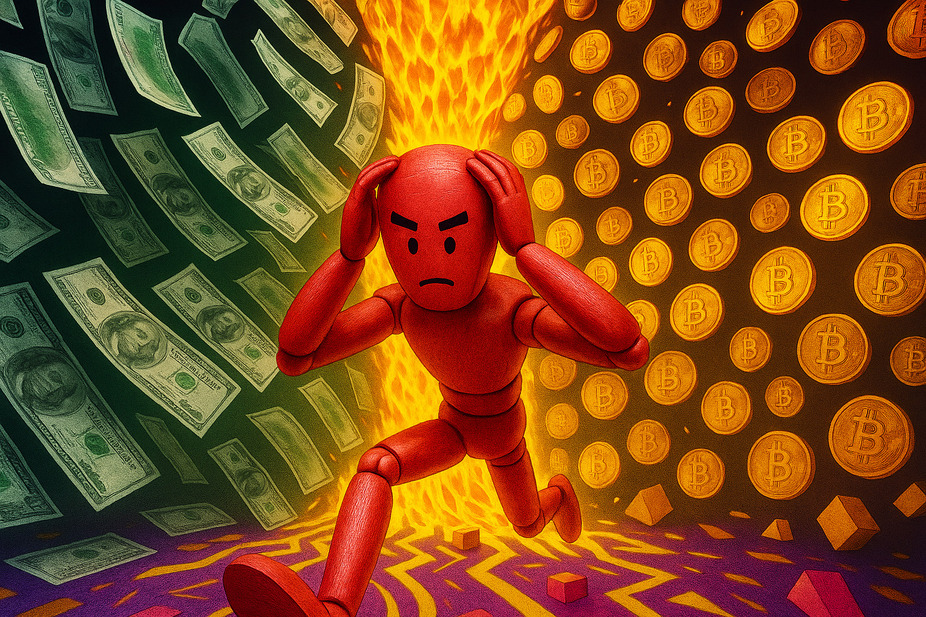Popular cryptos
Wrapped Bitcoin
Download Ironwallet app and get tool for making transaction without network fee
About Wrapped Bitcoin
Wrapped Bitcoin (WBTC) is an ERC-20 token backed 1:1 with Bitcoin. It was launched in January 2019 to bring Bitcoin’s liquidity to the Ethereum blockchain and allow BTC to be used in decentralized finance (DeFi) applications. WBTC provides a way to access Bitcoin’s value on Ethereum without converting BTC to ETH.
How WBTC Works
WBTC is issued by merchants who deposit BTC as collateral with a custodian. The merchant then mints WBTC tokens equal to the BTC they deposited. Each WBTC token is backed 1:1 by Bitcoin held in custody. To redeem WBTC for the underlying BTC, the tokens are destroyed and the BTC is released from custody.
This framework creates a fully auditable system where WBTC tokens can be transparently minted and burned. WBTC’s model involves multiple merchants and custodians to decentralize risk. All WBTC transactions are publicly viewable on Ethereum’s blockchain.
Benefits of WBTC
Wrapped Bitcoin provides several advantages over simply holding BTC:
- Liquidity – WBTC can offer greater liquidity for Bitcoin, letting users tap into DeFi markets on Ethereum.
- Faster transactions – Moving WBTC on Ethereum is generally faster and cheaper than transacting in BTC.
- Smart contracts – WBTC is ERC-20 compliant so it can be used with Ethereum smart contracts for lending, decentralized exchanges, derivatives and more.
- Access to DeFi – DeFi products like decentralized exchanges, lending/borrowing and prediction markets become accessible to Bitcoin holders through WBTC.
- Transparency – As an ERC-20 token, WBTC transactions are verifiable on Ethereum’s transparent blockchain.
Use Cases for WBTC
Some major use cases that demonstrate WBTC’s utility:
- Lending & borrowing – WBTC can be lent and borrowed through DeFi lending platforms like Compound, Aave and MakerDAO. This provides leverage for traders.
- Decentralized exchanges – WBTC has been listed on Uniswap, Kyber Network and other DEXs, improving Bitcoin’s exchange liquidity.
- Derivatives – Platforms like Synthetix allow creating WBTC derivatives like options and futures contracts.
- Margin trading – Margin lending platforms like bZx let traders borrow WBTC for margin trading.
- Payment – WBTC can be used for Ethereum blockchain payments needing the value of Bitcoin.
How to Buy Wrapped Bitcoin
To acquire WBTC, users have two options:
- Convert BTC to WBTC using a merchant service like CoinList. The user sends BTC to the merchant, who mints WBTC on a 1:1 basis.
- Buy WBTC with other cryptocurrencies on exchanges like Binance. As WBTC is an ERC-20 token, it can be purchased with coins like ETH, stablecoins, etc.
Once purchased, WBTC can be used across DeFi apps and platforms supporting ERC-20 tokens. Users can also convert WBTC back to BTC by returning tokens to merchants who burn WBTC and release the underlying BTC.
Risks and Drawbacks of WBTC
Despite its benefits, WBTC does come with some risks to consider:
- Third party reliance – Users must trust WBTC merchants and custodians to properly collateralize each token. Smart contracts help minimize risk but don’t fully eliminate it.
- Limited merchant support – There are a handful of merchants currently, reducing decentralization. More merchant adoption could improve this.
- Peg stability – BTC’s price fluctuations could destabilize WBTC’s 1:1 peg if there is insufficient arbitrage between the two assets.
- Ethereum congestion – High Ethereum network fees and transaction delays could impact WBTC compared to native BTC.
Future Outlook for WBTC
As decentralized finance grows, WBTC appears well-positioned for the future due to offering DeFi access to Bitcoin holders. WBTC could see growth in these areas:
- Adoption by more exchanges and DeFi platforms, boosting liquidity.
- Expanded merchant roster and token circulation, improving decentralization.
- Stablecoins collateralized by WBTC, linking Bitcoin’s value to fiat-pegged cryptos.
- Use of “tBTC” as an alternative implementation for trustless BTC on Ethereum.
- Solutions to congestion like Layer 2 scaling improve usability.
If Bitcoin demand rises in DeFi, Wrapped Bitcoin utilization and development is likely to continue accelerating.
Is Wrapped Bitcoin a good investment?
Wrapped Bitcoin’s value is currently tethered to Bitcoin, hence the success or failure of the two are inherently linked. This characteristic makes WBTC a potential gateway for traditional Bitcoin holders to diverge into DeFi and enjoy benefits from both Bitcoins liquidity and DeFi’s potential yield. The flip side of this scenario is that any potential downside risk to Bitcoin directly reflects on WBTC.
Analyzing historical performance can be insightful, but it shouldn’t be the only factor when contemplating an investment in cryptocurrency. The volatile nature of cryptocurrencies makes them a high-risk investment, which necessitates diligent and careful consideration. Due diligence includes understanding the underlying technology, associated risks, and the potential for the coin’s real-world application.
Lastly, regulatory landscapes around cryptocurrencies continually evolve, mandating investors maintain cautious alertness to these changes. Being an ERC-20 token, WBTC does provide the advantage of operating within Ethereum’s network, which could potentially boost its scalability and suitability in response to such changes. However, it is important to note that the potential of these benefits doesn’t automatically make WBTC a “good” or “bad” investment; rather, it depends heavily on individual circumstances, risk tolerance, and investment horizon.

























